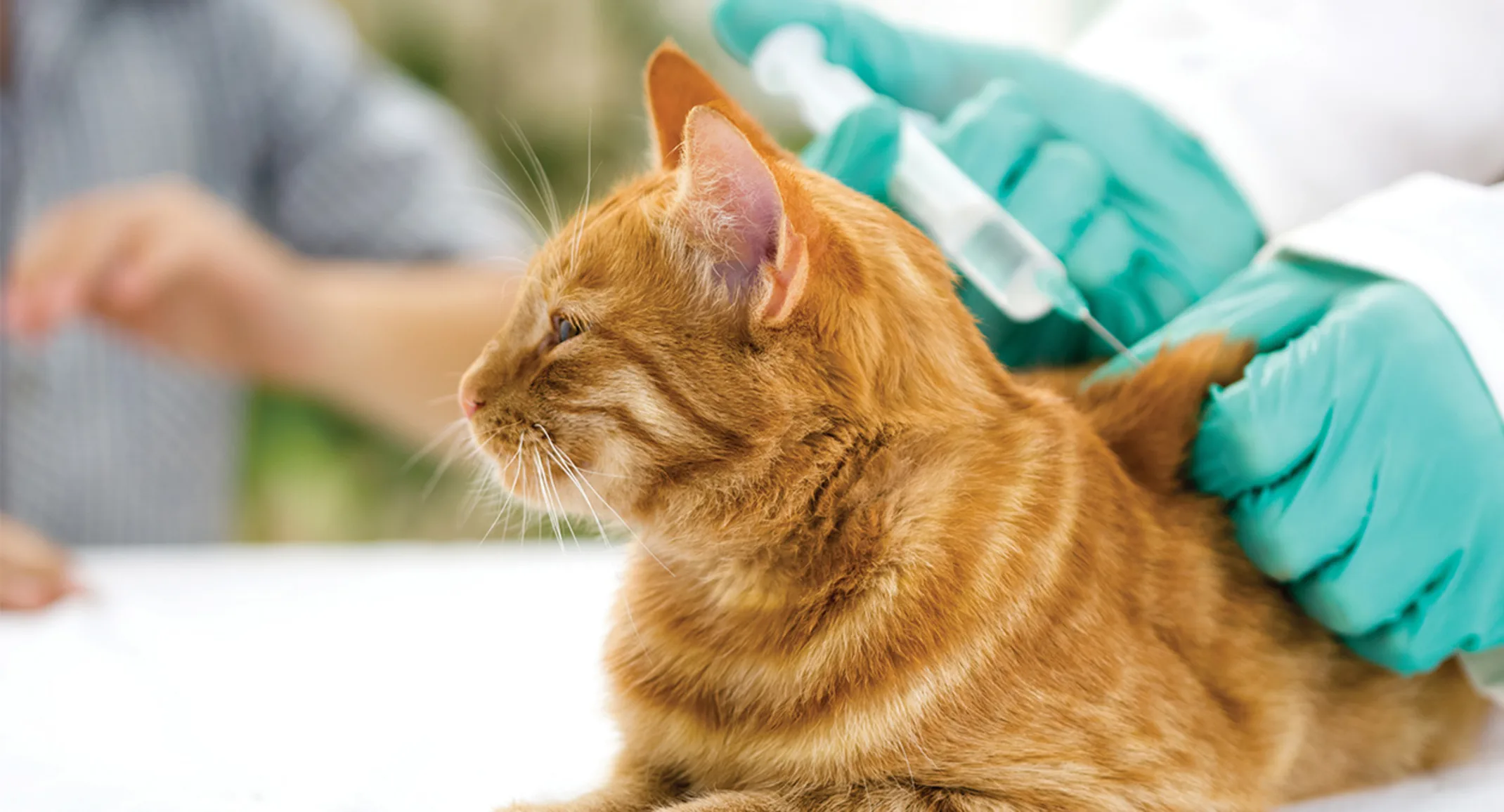How to Care for a Diabetic Pet
The Exam Room

You may be surprised to learn that pets can develop diabetes mellitus, and that the disease is remarkably similar to human diabetes. Early diagnosis, consistent treatment, and proper monitoring are critical to help diabetic pets live long, healthy lives. Understanding diabetes can help you recognize signs in your pet should they develop the disease, and how to properly care for them.
What is diabetes mellitus in pets?
Diabetes mellitus, commonly called diabetes, occurs when a pet cannot properly use glucose to produce energy. When food is digested, nutrients, including glucose, are absorbed in the blood. Insulin, a hormone produced by the pancreas, helps transport glucose from the bloodstream to the cells. Pets with diabetes either do not produce enough insulin (dogs), or their bodies do not properly use the hormone (cats). As a result, glucose is not transported into the cells, and the cells do not produce enough energy for normal function.
Pets can develop two diabetes types:
Insulin-dependent diabetes mellitus (i.e., similar to type 1 diabetes in people)— More common in dogs, this diabetes type results when the pancreas does not produce enough insulin.
Non-insulin-dependent diabetes mellitus (i.e., similar to type 2 diabetes in people)— More common in older, overweight cats, this diabetes type results from the body’s inability to respond normally to insulin.
**Although we refer to the second type as non-insulin-dependent diabetes mellitus, insulin is still a mainstay of treatment for this type of diabetes in cats.
Which pets are most likely to develop diabetes mellitus?
Diabetes can affect any pet, although risk increases with age—most diabetic cats are older than 6, and most diabetic dogs are older than 7. Female dogs are twice as likely as males to develop
the disease, and specific breeds, including miniature poodles, toy poodles, miniature schnauzers, pugs, and samoyeds, have a higher incidence.
Certain health conditions can also predispose pets to diabetes development, including:
Obesity
Hyperadrenocorticism (i.e., Cushing’s disease)
Hyperthyroidism
Pancreatitis
Additionally, long-term use of glucocorticoid medications (i.e., steroids) can contribute to diabetes development, especially in cats.
Which signs indicate diabetes in pets?
An early diabetes diagnosis can increase your pet’s likelihood of living a long, healthy life, so knowing the signs to watch for is important. Your veterinarian should evaluate your pet if you notice any of the following:
Increased urination
Excessive drinking
Weight loss
Appetite changes (i.e., eating more or less food)
Cloudy eyes
Chronic or recurring infections, especially skin and urinary infections
How is diabetes diagnosed in pets?
Your pet’s veterinarian may suspect diabetes based on your observations and their exam findings, but diagnostic tests are required for confirmation. A consistently high blood glucose level combined with glucose present in the urine indicates diabetes, since glucose that was absorbed into the blood is unable to move into the body’s cells. Your veterinarian may run additional tests to better understand your pet’s full health status, rule out other conditions, and assess the disease severity. Secondary problems caused by persistently high blood glucose levels, such as urinary tract infections and cataracts, may also require further testing.
How is diabetes treated in pets?
Diabetic dogs and cats require lifelong treatment and monitoring. The overall treatment goal is to maintain your pet’s blood glucose near normal levels, with as few fluctuations as possible. Treatment may include:
Insulin — All pets with diabetes will need insulin supplementation, administered by subcutaneous (i.e., under the skin) injection. This may sound overwhelming, but small needles are used, and most pets tolerate the injections well. Your veterinarian will teach you how to give these injections at home.
Medications — Some pets may require additional medications to help manage their condition, or treat other associated health problems.
Prescription diet — A special diet with specific carbohydrate, protein, and fiber levels in some cases can help regulate a pet’s blood glucose in combination with insulin therapy.
Exercise — Daily exercise can help pets regulate their glucose levels, and will help your pet become healthier overall.
At-home blood glucose monitoring — While not every pet with diabetes requires at-home monitoring, there are some cases in which this can be beneficial. Fortunately, recent advances in glucose monitoring technology have made this far easier than in the past, and if necessary can be performed with minimal effort and stress to the pet. Your veterinarian will teach you how to perform this simple test.
Keep in mind that diabetes treatment, and specifically insulin doses, are not one size fits all. Finding a treatment regimen that works for your pet will require frequent rechecks, monitoring, and dosage adjustments at first. Patience is key during the initial treatment stages, but fewer veterinary visits will be needed once you find the right plan. Long term, disease management will require regular visits for blood and urine testing.
What complications are associated with diabetes in pets?
Diabetes can lead to other medical problems, and you will want to monitor your pet for the development of concerning conditions, such as:
Cataracts
High blood pressure (i.e., hypertension)
Urinary tract infection
Additionally, you will need to watch for hypoglycemia signs because of insulin overdose, which can result from administering too much insulin, or administering insulin without your pet eating. Signs include:
Lethargy
Weakness
Incoordination
Seizures
Unconsciousness
If you think your pet may be hypoglycemic, contact your veterinarian immediately, as this is a medical emergency.
With patience and dedication, you can successfully manage diabetes mellitus and allow your pet to enjoy a good quality of life. If you think your pet may have diabetes, use this locator to find a veterinarian near you.
